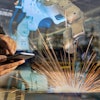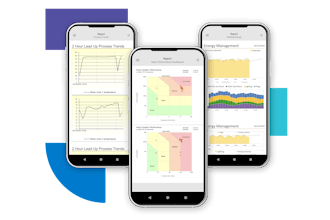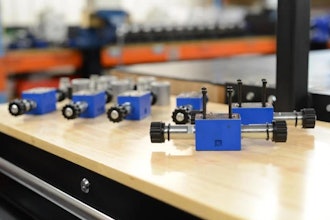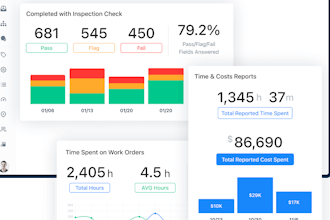
Over the past few decades, the Internet of Things (IoT) has rapidly transformed from a mere concept to a force driving innovation across various industries. Its profound influence touches everything from everyday appliances to intricate industrial processes, revolutionizing the way we perceive and interact with technology. Manufacturing is among the biggest beneficiaries of this transformation. Integrating IoT devices into manufacturing processes both elevates productivity and fosters innovation, allowing businesses to stay competitive.
Understanding IoT and Its Components
At the heart of IoT lie five integral components:
- Sensors that detect environmental changes.
- Actuators performing actions based on processed data.
- Connectivity that ensures seamless data exchange between devices.
- Data processing that interprets the accumulated information.
- A user interface that facilitates human interaction with the system.
Harnessing these five components, IoT transforms manufacturing — making it smarter, more efficient, and responsive. It enables manufacturers to monitor and optimize their processes in real time, significantly reducing waste and enhancing productivity. With interconnected devices collecting and sharing data, companies get a crystal-clear view of their processes, allowing for more informed decision-making and streamlined operations.
Real-time monitoring, facilitated by IoT, is akin to a vigilant sentinel for manufacturers. Continuously tracking every aspect of the production line, from equipment health to throughput rates, it offers insights instantaneously. This immediate feedback allows manufacturers to quickly identify and rectify discrepancies, ensuring optimal production conditions at all times.
Tracking a product's lifecycle through the lens of IoT is intuitive. Every stage, from raw material acquisition to the finished product's dispatch, is meticulously monitored — the granular visibility ensures quality control and valuable data for future process improvements.
With change being a constant in the manufacturing world, adapting to the changes becomes significantly more important. Be it shifts in customer preferences, material shortages, or global economic fluctuations, IoT-enabled systems provide the insights and flexibility needed for rapid adjustments, ensuring minimal disruption. Data-driven insights, delivered in real-time, empower manufacturers to make informed choices swiftly. This optimizes operations and further bolsters a company's market responsiveness.
With real-time data at their fingertips, manufacturers can optimize resource allocation, ensuring that every ounce of material and every minute of machine time is used to its fullest potential. Predictive maintenance, another brainchild of IoT, has proven to be a game-changer for manufacturers. It analyzes patterns and identifies potential equipment failures before they manifest, so manufacturers can proactively address them. This minimizes costly downtimes but also extends the lifespan of machinery.
Environmental concerns have taken center stage as industries grapple with their ecological footprints. IoT offers a solution in this realm: monitoring energy consumption in real-time and identifying areas of wastage means manufacturers can significantly reduce their energy costs and environmental impact, championing the cause of green manufacturing.
Steps to Successful Integration
Before diving into IoT integration, manufacturers must thoroughly evaluate their current infrastructure. Identifying gaps and potential areas of enhancement aids in crafting a tailored approach to integration, ensuring maximum return on investment. Manufacturers should prioritize solutions that align with their specific needs, operational goals, and existing systems to guarantee a smooth and effective integration.
Once the right devices are chosen, meticulous installation and configuration are the next step. Proper setup ensures that the devices function optimally, capturing accurate data and fostering seamless connectivity throughout the manufacturing unit. Equipping staff and stakeholders with the necessary knowledge and skills ensures they can maximize the potential of the newly integrated devices, elevating overall productivity.
Beyond mere data collection, the true power of IoT lies in data interpretation. Manufacturers must implement robust data analysis tools, transforming raw information into actionable insights that can drive process improvements and strategic decisions. While paying attentions to these factors can help with a successful integration, there are challenges that will need to addressed, including:
- Data security and privacy concerns. With the influx of data comes the inevitable challenge of data security and privacy. Prioritize implementing robust security measures, safeguarding sensitive information, and instilling confidence in stakeholders about the integrity of their data.
- Compatibility and interoperability issues. IoT's expansive nature brings compatibility and interoperability challenges. To overcome these hurdles, opt for standardized solutions and platforms, aiming for smooth interaction between varied devices and systems.
- Scalability challenges. Modern manufacturing requires solutions that can scale with growing demands. To counteract scalability challenges, opt for modular and flexible systems that can accommodate expansion and diversification without major overhauls.
Drawing from these challenges, the imperative for manufacturers is clear: IoT integration, while promising, demands careful planning and execution. Adopting a proactive approach mitigates risks and ensures that the benefits of IoT are realized to their fullest potential.
Looking ahead, the intertwining of advanced analytics and artificial intelligence with IoT will further propel manufacturing innovation. These technologies promise to refine data interpretation, automate complex processes, and unearth deeper insights, setting the stage for an even more interconnected manufacturing landscape. IoT doesn't stand alone in the evolution of manufacturing. Its fusion with other Industry 4.0 technologies like robotics, augmented reality, and 3D printing will amplify synergies, crafting a future where integrated solutions are the go-to solutions.
Finally, digital factories represent the zenith of technological convergence in manufacturing. Marrying the capabilities of IoT with other advanced technologies, digital factories offer a holistic, digitalized production environment. Within these factories, IoT acts as the nervous system, connecting disparate processes and systems. The transition from traditional setups to digital factories will play a defining role in shaping the future of the industry.
The undeniable potential of IoT in manufacturing is paving the way for enhanced operational efficiency, unparalleled visibility, and groundbreaking innovation. As industries increasingly adopt these interconnected devices, they’re reaping benefits that resonate across the production chain — from resource management to product delivery.
Manufacturers on the brink of technological transformation should by all means acknowledge the game-changing prowess of IoT. Embracing this revolution solidifies their standing in today's competitive marketplace, but it also future-proofs their operations against impending challenges.
For over 30 years, Eric Whitley has been a noteworthy leader in the manufacturing space. After an extensive career as a reliability and business improvement consultant, Eric joined L2L, where he currently serves as the Director of Smart Manufacturing.






















